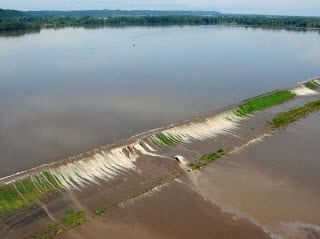 National Flood Insurance Program reform promotes preparedness
National Flood Insurance Program reform promotes preparedness
Changes made to the National Flood Insurance Program earlier this year may help prepare the country for the risks it faces from powerful natural disasters in the future. It is no secret that the National Flood Insurance Program is having trouble, and has been struggling to overcome financial turmoil since 2005’s Hurricane Katrina. In June of this year, Congress approved an expansive overhaul of the program, which extended its lifespan for another five years and closed numerous loopholes that have led to the hemorrhage of money from the program itself.
Insurance industry attuned to the threat of climate change
The insurance industry is well aware of the growing frequency and intensity of powerful storms that had been previously categorized as 1-in-100 year events. Hurricane Sandy is one such storm. While the storm itself did not reach the strength of Hurricane Katrina in any sense, Sandy produced widespread floods throughout much of the East Coast, causing significant damage to properties in numerous states. Some link the prevalence of powerful storms to climate change, which is the cause for some controversy. The insurance industry is disinclined to participate in this controversy, but is positioning itself to address any of the risks that may be associated with climate change.
Overhaul aims to get property owners out of risk areas
The overhaul of the National Flood Insurance Program has enabled the federal government to provide better support to victims of flood damage. Some of these changes make flood insurance a requirement for homeowners that live in flood prone areas of the country. Properties that file claims for flood damage regularly without moving to safer locations will be phased out of the National Flood Insurance Program in an attempt to save money on paying excessive claims. Overall, the aim of the reformed insurance program is meant to encourage property owners to abandon areas that are prone to floods. Some insurers suggest that this is a pre-emptive move against rising sea levels.
Rising sea levels present serious hazard for property owners in coastal regions
As sea levels rise, the prevalence of flooding is expected to increase. Powerful storms, such as hurricanes, often create surges of ocean water that get pushed inland. Rising sea levels mean that these storm surges will become more disastrous and could effectively wipe out entire communities that are in high risk areas around the coast.
